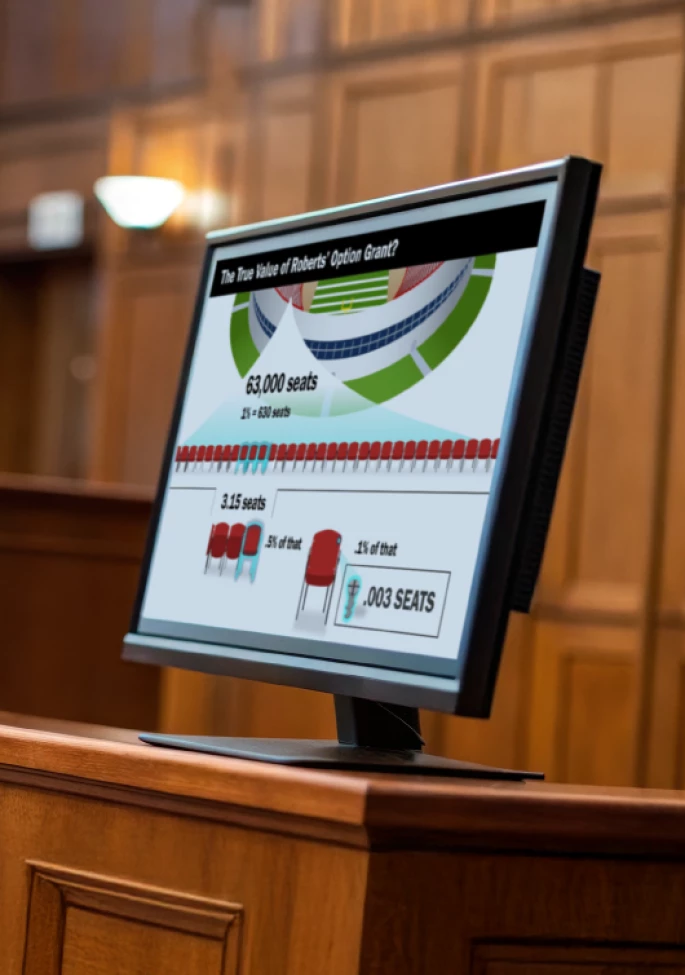Revisit Parts 1–4 for the essential guidelines you need to know to prepare and present the most impactful trial graphics.
Constant evolution in the capabilities of electronic presentation media, and in jurors’ own experiences with graphics in every form, will change how we present our cases. Here are some trends trial lawyers are likely to face in the near future.
Trends in the Trial Graphics Field
Hand, Not Handheld, Controls
The advent of virtual reality technology is going to allow display screen control with hand gestures, rather than a dedicated controller. This presents exciting possibilities for trial counsel—imagine moving documents of other items around the display screen with just a wave of your hand. This is an opportunity for high reward, but it poses obvious risks and places a premium on counsel’s familiarity with operating the system.
Beyond the iPad
Tablets are now common in our everyday law practices, and they have made their way into hearings and small trials. These devices allow trial attorneys to quickly and easily display documents and small video clips. In the near future, look for larger, thinner, and even simpler touch screen devices (that an expert witness could even walk up to and control) that may soon appear in the courtroom.
3D Printing of Demonstratives
Because mixed media will always be a great way to hold jurors’ attention, consider bringing a real-life example to court with 3D printing. Say you have a patent case dealing with intricate parts of a machine. Those parts can now be printed out in plastic using a device the size of a desktop printer.
This technology has been around for a few decades, but because of its cost has been employed mostly in high-dollar “bet-the-company” cases. Now that prices have dropped for this emerging technology, we expect its use in the courtroom to grow in the future.
The “Twitter Effect”
Jurors who are frequent Twitter users—or consumers of similar social media—place a high premium on the economy of language. Think of the abbreviated language used in many text messages. While quality trial graphics have always used few words, pressure to further pare text in them will only increase. The key is finding a good balance between too much information and not enough.
In Conclusion
In addition to anticipating courtroom trends, keep these factors in mind in order to deliver the most effective visual argument at trial:
- When to create your trial graphics
- Which design rules to follow
- What your graphics should (and shouldn't) include
- How to perfect your presentation
The best way to stay on top of new developments in litigation, design, and technology is to partner with experienced trial consultants.
At IMS, going to trial is our business. When you work with our integrated team, your themes become solid, your graphics drive home those themes, and your case is presented seamlessly. Let’s collaborate: contactus@imslegal.com
This article series is based on a program originally presented to the International Association of Defense Counsel (IADC) by IMS Client Services Advisor Adam Bloomberg and Bryant Spann, Partner at Thomas Combs & Spann PLLC.







